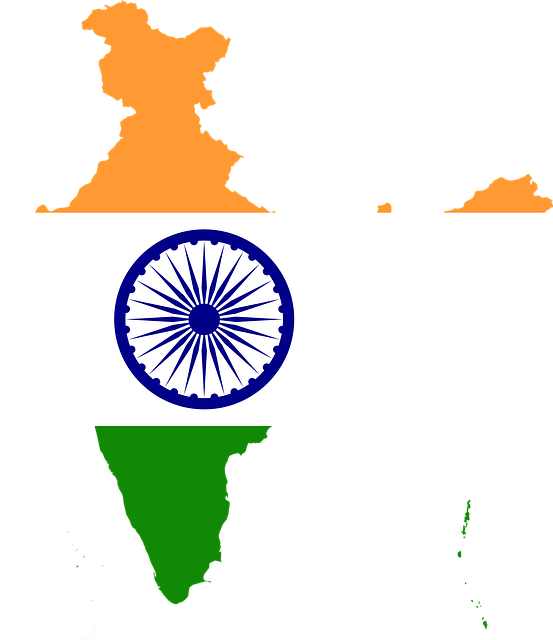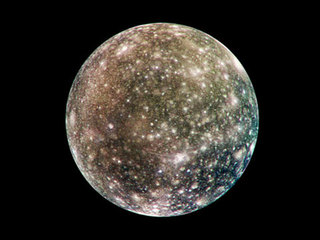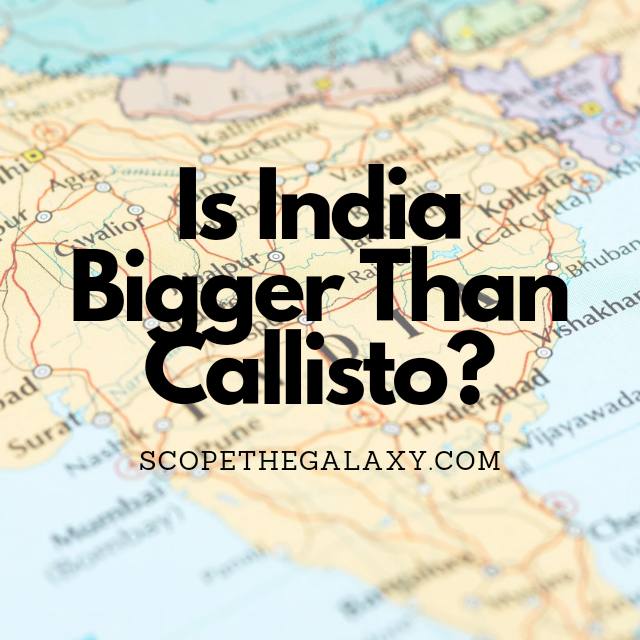*This post may contain affiliate links. This means we may make a commission if you purchase an item using one of our links*
India is the seventh largest country on Earth and forms part of the Asian continent while Callisto is the third largest moon in the solar system. It surface area of 73 million sq. kilometers and a volume of 59 billion cubic kilometers whilst India is far smaller with a surface area of 3.28 million sq. kilometers and a volume of 154.5 million cubic kilometers.
Continue reading to explore this comparison of surface area, diameter, volume, and physical geography and to learn even more about these two intriguing bodies of mass.
How Big Is India?
Table of Contents

India is a South Asian country, which is the seventh largest by area and second most populated in the world (with over 1.3 billion people). In addition, it is the most populous democracy in the world. The Indian Ocean bounds it to the south, while the Arabian Sea covers the southwest, and the Bay of Bengal borders the southeast.
The diameter of India, measuring east to west, is 2,933km, while the extreme latitudes of north and south cover a length of 3,214km. Either way, it is smaller than the moon Callisto’s diameter. India’s coastline stretches over 7,000km, meaning that much of India’s landmass protrudes into the Indian ocean.
India’s total surface area is 3,287,590 sq. km and covers a diverse range of landscapes, from dry stretches of desert to snow-covered mountain peaks. Most of the central, northern, and eastern regions of India encompass the fertile lands of the Indo-Gangetic plain, while the sandy and rocky landscape of the Thar Desert occupy the west.
This fertile area – sometimes referred to as the Ganges plain – covers a large amount of India’s north and is created by soil deposits from the rivers that run from the vast Himalayan mountains. In some areas, the depth of this silt can be greater than 25,000ft!
The highest point is India is undefined because of a territorial dispute with Pakistan. The highest point within this territory (known as Kashmir) is K2, which stands at 8,611m. However, the highest point in India’s undisputed territory is Kanchenjunga which reaches a height of 8,598m.
Average crustal thickness varies between regions, ranging from 30-35 km in the plains to 80 km in the mountainous areas. Calculating the mean thickness among all these variations totals roughly 47km. If we then multiply this by the surface area, we can calculate the estimated volume of India to be 154,516,730 cubic km.
How Big Is Callisto?

Callisto is a moon of Jupiter and the third largest moon in the Solar System, which was discovered in January 1610 by Galileo Galilei.
The diameter of Callisto is 4,820.6km, while its surface area is 73,000,000 sq. km, a far greater expanse than that of the Indian subcontinent. Still, like our seventh largest country, the terrain of Callisto varies, and it is the most heavily cratered object in our solar system.
Calisto’s volume is an impressive 59,000,000,000 cubic km, giving it a similar size to the planet Mercury (60.8 billion cubic km). Callisto is classified as a moon and not a planet because it orbits Jupiter rather than the Sun. Still, it is one of the largest moons in the Milky Way and covers an impressive expanse.
This mega moon is 99% as big as Mercury, but it only possesses a third of its weight because of the moon’s mixed composition.
Callisto’s average density is 1.83 cubic cm, which suggests that it is made of roughly equal parts of water ice and rocky material, plus additional volatile ices (like ammonia). Scientific research into the moon suggests that 49-55% of its total constitution is ice. The remaining rock is likely composed of silicates, chondrites, and iron oxide.
Still, the water ice only accounts for between 25 and 50% of the planet’s overall mass.
The surface of Callisto is heavily cratered and has a dark appearance. Scientists believe that the bright patches consist mainly of ice, while the darker patches show areas where the ice has eroded. The most distinctive crater is Valhalla, with its bright central region.
In the past, many scientists thought this huge “hunk of rock and ice” was “boring” because it had no shifting tectonic plates and no volcanic activity. At first appearances, it seemed to be a dead world.
Still, more recent research by NASA scientists concludes that Callisto could house a salty ocean interacting with rocks that are more than 250 km below the surface. Combine this with detections of oxygen in the exosphere, and today Callisto is included in the list of places where life could exist beyond Earth.
Callisto is 180 times farther from Earth than our moon, but its large amount of surface ice makes it shine brighter than our moon. Earth’s moon reflects only 0.12% of the Sun’s light, whereas Callisto reflects up to 20%.
Summary
India is an impressively sized country with an extremely dense population (it is forecast to become the most populous country in the world within the next couple of years). Still, its mass doesn’t compare to Callisto. This vast moon is almost as big as the planet Mercury and could fit the volume of India inside its mass 381 times.
References
Crustal structure of the Indian subcontinent – ScienceDirect
Geography of India (mcgill.ca)
Overview | Callisto – NASA Solar System Exploration
10 Interesting Facts about Callisto (astronomytrek.com)

